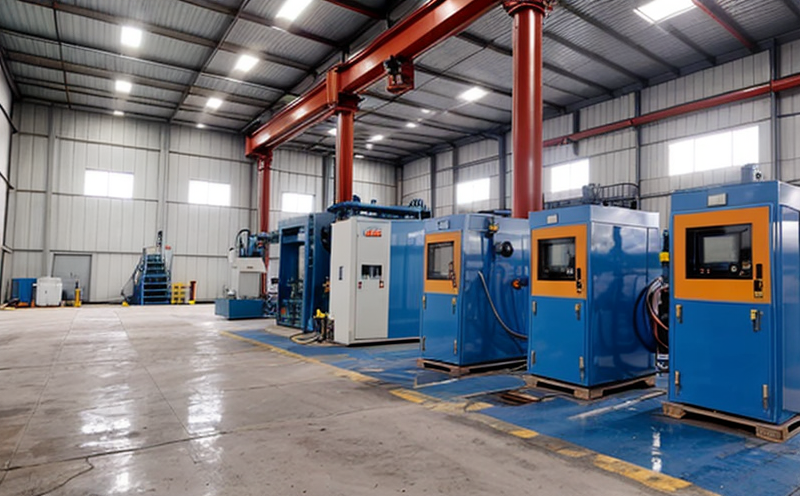ISO 3262 Extenders for Paints Calcium Carbonate Testing
The testing of ISO 3262 extenders for paints calcium carbonate is a critical process in the quality control and assurance of industrial minerals used within the paint manufacturing industry. This service ensures that the additives meet international standards, thus guaranteeing their performance, consistency, and reliability.
The process involves several steps to ensure accuracy and precision:
- Sample Preparation: The raw calcium carbonate is thoroughly ground to a specific particle size range as per ISO 3262-1 requirements. This ensures that the material can be accurately characterized through various analytical methods.
- Analytical Methods: Multiple techniques are employed depending on the parameters being tested:
- Optical Microscopy: To observe particle morphology and size distribution.
- Infrared Spectroscopy (FTIR): For structural analysis of the mineral.
- Density Measurement: Using Archimedes' principle to determine bulk density accurately.
- Testing Parameters: The service covers a wide range of parameters including particle size distribution, specific surface area (BET method), and chemical composition. These are crucial for ensuring that the calcium carbonate meets the required specifications as defined in ISO 3262.
- Reporting: Detailed reports are generated which include all test results along with a compliance analysis against ISO standards. This helps manufacturers to make informed decisions about their raw material supply chain and product quality.
The importance of this testing cannot be overstated, especially in industries where the quality of paints directly impacts the longevity and performance of coated surfaces.
| Parameter | Description | Acceptance Criteria (ISO 3262-1) |
|---|---|---|
| Particle Size Distribution | Range of particle sizes present in the material. | 90% passing through a specified sieve size. |
| Specific Surface Area (BET) | The total surface area per unit mass of the sample. | Within ±5% of nominal value. |
| Density | The ratio of mass to volume for a substance. | Within ±2% of nominal value. |
In summary, this service provides comprehensive testing that ensures the quality and consistency of calcium carbonate extenders used in paints. By adhering strictly to ISO 3262 standards, manufacturers can enhance product performance while maintaining compliance with international regulations.
Why It Matters
The reliability and accuracy of ISO 3262 extenders for paints calcium carbonate testing directly impact the quality and longevity of painted surfaces. This service ensures that the raw materials used in paint formulations are consistent, which is essential for both industrial applications and consumer products.
- Better Product Performance: Ensures that paints adhere better to surfaces, providing longer-lasting protection against environmental elements such as UV light, moisture, and temperature fluctuations.
- Enhanced Durability: Consistent quality of calcium carbonate extends the life of painted structures, reducing maintenance costs over time.
- Compliance with Regulations: Adherence to ISO standards ensures that products meet regulatory requirements, which is crucial for both domestic and international markets.
- Cost Efficiency: By ensuring high-quality raw materials, manufacturers can reduce waste and improve efficiency throughout the production process.
The stakes are particularly high in industries where durability and performance are paramount. For instance, in the automotive industry, poor quality calcium carbonate could lead to premature paint degradation, affecting vehicle aesthetics and safety.
Additionally, this service supports research and development efforts by providing accurate data that can inform new product formulations and process improvements.
Customer Impact and Satisfaction
The impact of high-quality testing on customer satisfaction is profound. By ensuring consistent performance and reliability, customers benefit from products that meet or exceed expectations:
- Reduction in Defects: Consistent quality minimizes the occurrence of defects, leading to higher customer satisfaction.
- Enhanced Reputation: A reputation for delivering high-quality products enhances a company's standing within the industry and with its customers.
- Increased Efficiency: With reliable raw materials, production processes become more efficient, reducing downtime and increasing output.
- Competitive Advantage: Meeting or exceeding ISO standards sets a benchmark that differentiates products in the market, giving companies a competitive edge.
Sustained satisfaction from satisfied customers translates into loyalty and repeat business. This, in turn, fosters long-term growth and stability within the industry.
Use Cases and Application Examples
- Paint Formulation Development: Ensures that new paint formulations meet performance criteria by providing reliable data on raw material quality.
- Quality Control: Regular testing ensures that production batches consistently meet the required specifications, minimizing the risk of batch failures.
- R&D Projects: Supports research efforts to develop new paint formulations and improve existing ones.
- Supplier Evaluation: Provides data for evaluating raw material suppliers' consistency and reliability.
| Use Case | Description | Outcome |
|---|---|---|
| Paint Formulation Development | Developing a new paint formulation that meets specific performance criteria. | The new formulation is reliable and consistent, ensuring customer satisfaction. |
| Quality Control | Maintaining consistent quality in production batches. | Batches consistently meet the required specifications, reducing the risk of batch failures. |
| R&D Projects | Supporting research efforts to improve existing paint formulations and develop new ones. | New or improved formulations that are more effective and efficient. |
| Supplier Evaluation | Evaluating raw material suppliers' consistency and reliability. | Selecting the most reliable suppliers for long-term partnerships. |
The use cases demonstrate how this service is integral to various aspects of the paint manufacturing process, from development to production control. By providing accurate data, it supports informed decision-making that drives continuous improvement and quality assurance.





